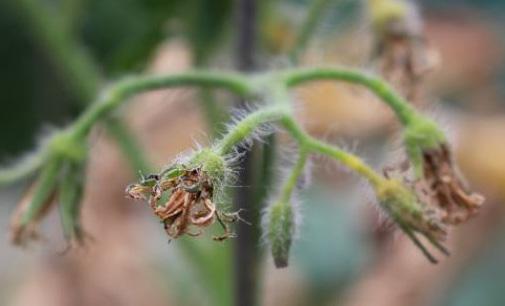
1 minute read
Blossom Drop
Description
Flowers that dry and drop from stems with no fruit formation are primarily caused by temperatures that are not conducive to effective pollination. Blossom drop occurs when daytime temperatures above 90°F accompany nighttime temperatures above 72°F or below 55°F. Excessive heat desiccates pollen, resulting in poor fruit set and dried blossoms that eventually drop. Split set on tomatoes is a related issue and occurs when a period of intense heat surrounds pollination and fruit set. This results in two distinct crops of tomatoes, with a period between with little to no production.
Management
Tomatoes grow best in daytime temperatures between 72°F and 85°F. Shade cloth (30% shade) can help reduce the incidence of blossom drop by moderating temperatures around the plants. However, in extreme and prolonged heat, it is unlikely that the problem can be corrected until temperatures are reduced. Irrigation management and mulching at the base of the plant to keep the soil evenly moist and help pollen stay hydrated and viable. Other causes of blossom drop include wind, low humidity, and high nitrogen content, all of which promotes vegetative growth and limits blossom development.
Timing
Blossom drop is most common during months of extreme temperature (July and August in northern Utah).













